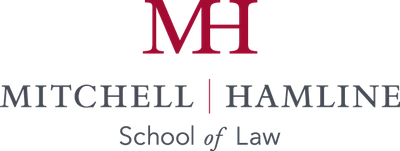Mitchell Hamline School of Law is committed to complying with all applicable intellectual property and copyright laws of the United States. The School provides this information to assist faculty, staff and other community members in understanding and complying with copyright law. It is not a comprehensive or exhaustive guide to the wide diversity of contexts in which the use of copyrighted materials arise nor is it a substitute for legal advice.
Copyright in Education Contents
- Part 1. Copyright Generally
- Part 2. Copyright in Education Basics
- Part 3. Summary of the TEACH Act (17 U.S.C. 110(2))
- Part 4. Linking to Textual Content
- Part 5. Guidance on Applying the Factors of Fair Use
- Part 6. Linking to Audio/Visual Content from the Web in Your Canvas Course
Copyright in Education Basics
One of the rights accorded to the owner of copyright is the right to reproduce or to authorize others to reproduce the work in copies or phonorecords. 17 U.S.C. § 106(1) (2017). This right is subject to certain limitations found in sections 107 through 122 of Title 17. The copyright principles that apply to print materials in the course of teaching, scholarship and research also apply to electronic materials. Permission may be required for the use of copyrighted materials even when they have already been posted elsewhere online.
There are three exceptions that apply in educational activities: face-to-face teaching (Section 110(1)), Fair Use (Section 107), and the TEACH Act (Section 110(2)) in distance learning. When none of these exceptions apply, educators can obtain a limited license to reprint or republish copyrighted material, commonly referred to as a permission.
The face-to-face teaching (Section 110(1)) exception allows performance or display of copyrighted material, legally obtained, in a traditional classroom setting at a not-for-profit educational institution. It does not include an exception to the right of reproduction, but fair use may apply to allow copying.
The Fair Use (Section 107) exception contains a list of various purposes for which the reproduction of a particular work may be considered fair, such as criticism, comment, news reporting, teaching, scholarship and research. Section 107 also sets out four factors to be considered in determining whether or not a particular use is fair:
- The purpose and character of the use, including whether such use is of a commercial nature or is for nonprofit educational purposes;
- The nature of the copyrighted work;
- The amount and substantiality of the portion used in relation to the copyrighted work as a whole; and
- The effect of the use upon the potential market for, or value of, the copyrighted work.
The distinction between what is fair use and what is infringement in a particular case will not always be clear or easily defined. There is no specific number of words, lines or notes that may safely be taken without permission. Acknowledging the source of the copyrighted material does not substitute for obtaining permission.
For a more in depth discussion of this topic see the U.S. Copyright Office, Circular 21, Reproduction of Copyrighted Works by Educators and Librarians (08/2014) and the Guidance on Applying the Factors of Fair Use section below.
The TEACH Act (Technology, Education, and Copyright Harmonization Act (2002) (Section 110(2)) allows educators in accredited, nonprofit, educational institutions to display copyrighted works such as motion pictures, images, dramatic, choreographic or other audiovisual works in distance education environments. It applies to digital content and access must be limited to enrolled students for the duration of the class only. Students must be advised that the material is subject to copyright.
For a more detailed discussion of the requirements of the TEACH Act, see Copyright in Education Part 3.
